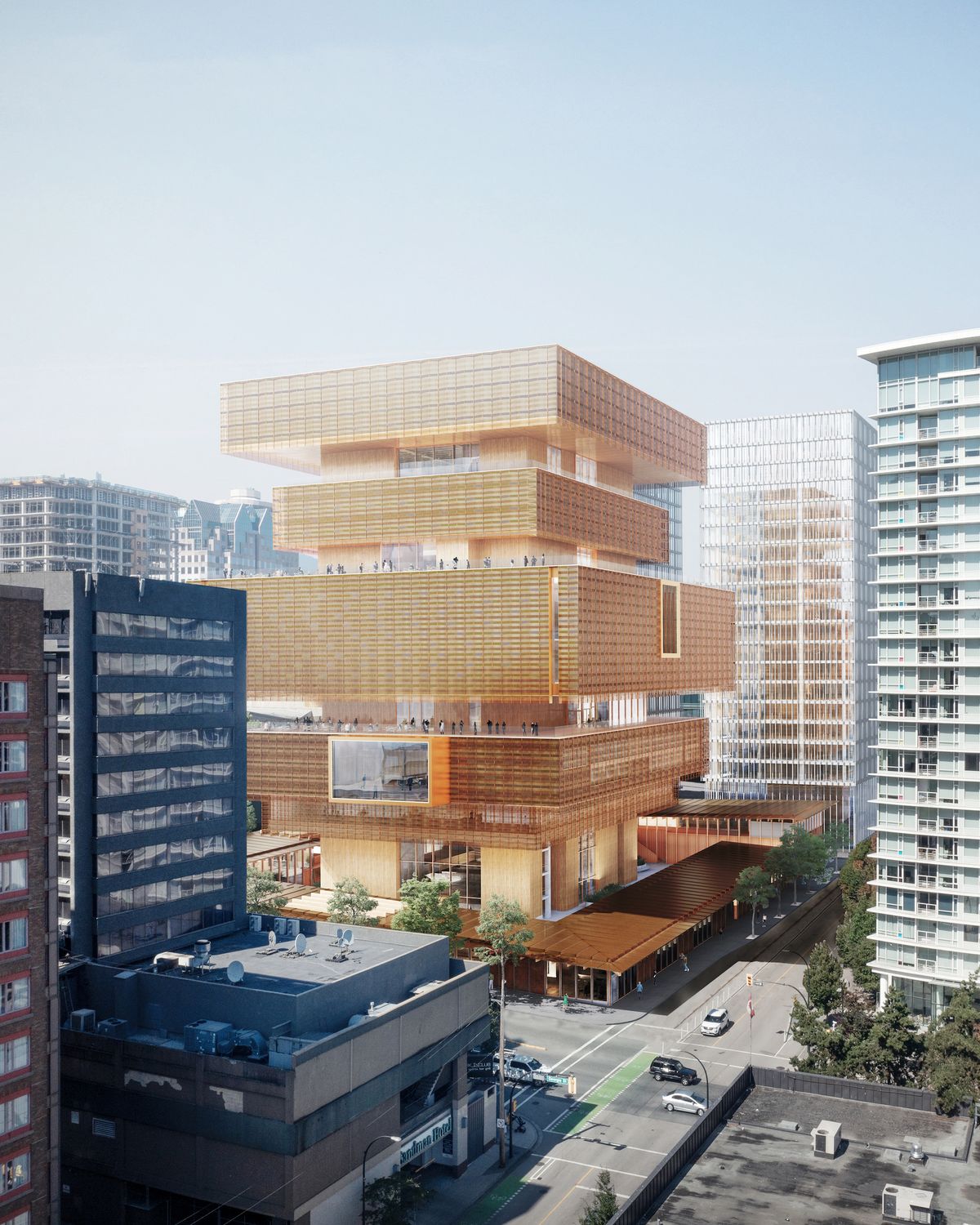Timed nicely for Canada Day on 1 July, the Vancouver Art Gallery (VAG) announced this week that it will receive C$29m ($22m) in federal funding for its new building, which is expected to open in 2027. The total sum comprises C$25m ($19m) in federal funding from Infrastructure Canada through the Green and Inclusive Community Buildings (GICB) programme, as well as an additional C$4.3m ($3.3m) from the Department of Canadian Heritage.
The new Chan Centre for Visual Arts—set to exceed net zero carbon standards for energy and to feature solar heating, triple-glazed windows and heat pumps—will be the first art gallery built to Passive House standards in North America and, at some 300,000 sq. ft, the largest in the world. Designed by Herzog & de Meuron, with a shimmering skin evoking local native weaving patterns, it will boast a multi-purpose Indigenous Community House, a theatre, public art spaces and programming for marginalized and underserved groups.
The new funding means that, together with private donations—including a C$100 million donation from the Audain Foundation and C$40 million from the Chan Family Foundation—C$270m of the project’s overall C$400m ($310m) budget has been raised. The provincial government of British Columbia has contributed C$50m, while the city has donated land at a prime downtown location under a 99-year lease.
The significant fundraising progress marks a turning point in an often contentious 15-year campaign to secure a new facility for the VAG, which has outgrown its current space in the former provincial courthouse at 750 Hornby Street. There has been much public debate about the design, budget and overall concept for the new gallery, and the architects have made several revisions. It was initially spearheaded by former VAG director Kathleen Bartels, who stepped down after 17 years at the helm in 2019 after labour strife and ongoing issues around the new gallery (she is now the director of the Museum of Contemporary Art Toronto).
“The funding from Infrastructure Canada and the Department of Canadian Heritage contributes to the resources necessary to make the new Vancouver Art Gallery an international leader in environmental sustainability,” gallery director Anthony Kiendl said in a statement.
He added that the new gallery, scheduled to begin construction early next year, is “poised to be a platform to amplify the voices of local and international artists, Indigenous and culturally diverse communities, and will be a community gathering place for people of all ages, cultures and backgrounds to meet and share ideas.”
Government funding for major museum projects in British Columbia can be a contentious issue. Earlier this month plans to completely demolish and rebuild the Royal BC Museum in the provincial capital, Victoria, to the tune of C$789m ($609m) were scrapped amid outcry over the project’s price tag.


